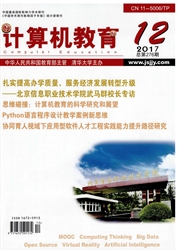

 中文摘要:
中文摘要:
Objective:To record surveillance,antibiotic resistance of uropathogens of hospitalized patients over a period of 18 months.Methods:Urine samples from wards and cabins were used for isolating urinary tract infection(UTI)-causing bacteria that were cultured on suitable selective media and identified by biochemical tests;and their antibiograms were ascertained by Kirby-Bauer’s disc diffusion method,in each 6-month interval of the study period,using 18 antibiotics of five different classes.Results:From wards and cabins,1 245 samples were collected,from which 996 strains of bacteria belonging to 11 species were isolated,during April 2011 to September2012.Two Gram-positive,Staphylococcus aureus(S.aureus)and Enterococcus faecalis(E.faecalis),and nine Gram-negative bacteria,Acinetobacter baumannii,Citrobactcr sp.,Escherichia coli,Enterobacter aerogenes,Klebsiella pneumoniae.Klebsiella oxytoca,Proteus mirabilis,Proteus vulgaris and Pseudomonas aeruginosa were isolated.Both S.aureus and E.faecalis were vancomycin resistant,and resistant-strains of all pathogens increased in each 6-month period of study.Particularly,all Gram-negatives were resistant to nitrofurantoin and co-trimoxazole,the most preferred antibiotics of empiric therapy for UTI.Conclusions:Antibiograms of 11 UTI-causing bacteria recorded in this study indicated moderately higher numbers of strains resistant to each antibiotic studied,generating the fear of precipitating fervent episodes in public health particularly with bacteria,Acinetobacter baumannii,Escherichia coli,Klebsiella pneumoniae and S.aureus.Moreover,vancomycin resistance in strains of S.aureus and E.faecalis is a matter of concern.
 英文摘要:
英文摘要:
Objective:To record surveillance,antibiotic resistance of uropathogens of hospitalized patients over a period of 18 months.Methods:Urine samples from wards and cabins were used for isolating urinary tract infection(UTI)-causing bacteria that were cultured on suitable selective media and identified by biochemical tests;and their antibiograms were ascertained by Kirby-Bauer’s disc diffusion method,in each 6-month interval of the study period,using 18 antibiotics of five different classes.Results:From wards and cabins,1 245 samples were collected,from which 996 strains of bacteria belonging to 11 species were isolated,during April 2011 to September2012.Two Gram-positive,Staphylococcus aureus(S.aureus)and Enterococcus faecalis(E.faecalis),and nine Gram-negative bacteria,Acinetobacter baumannii,Citrobactcr sp.,Escherichia coli,Enterobacter aerogenes,Klebsiella pneumoniae.Klebsiella oxytoca,Proteus mirabilis,Proteus vulgaris and Pseudomonas aeruginosa were isolated.Both S.aureus and E.faecalis were vancomycin resistant,and resistant-strains of all pathogens increased in each 6-month period of study.Particularly,all Gram-negatives were resistant to nitrofurantoin and co-trimoxazole,the most preferred antibiotics of empiric therapy for UTI.Conclusions:Antibiograms of 11 UTI-causing bacteria recorded in this study indicated moderately higher numbers of strains resistant to each antibiotic studied,generating the fear of precipitating fervent episodes in public health particularly with bacteria,Acinetobacter baumannii,Escherichia coli,Klebsiella pneumoniae and S.aureus.Moreover,vancomycin resistance in strains of S.aureus and E.faecalis is a matter of concern.
 同期刊论文项目
同期刊论文项目
 同项目期刊论文
同项目期刊论文
 期刊信息
期刊信息
